Google Web Lab by Universal Design Studio and MAP
London Design Festival: the first project by MAP, the new studio of designers BarberOsgerby, is the exhibition design of a digital laboratory at London's Science Museum, where visitors can interact with internet-users around the world using musical instruments and robots (+ slideshow).
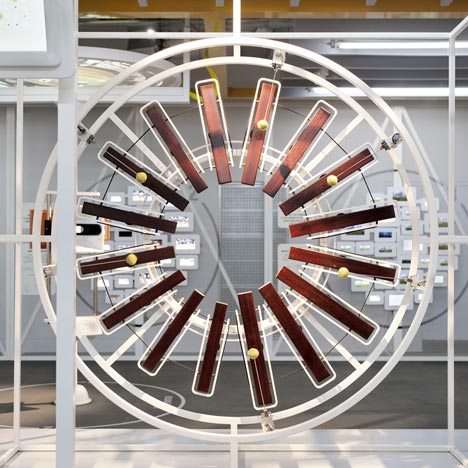
Edward Barber and Jay Osgerby have founded MAP as an industrial design consultancy that will operate alongside their architecture interior design company Universal Design Studio and their design studio BarberOsgerby.
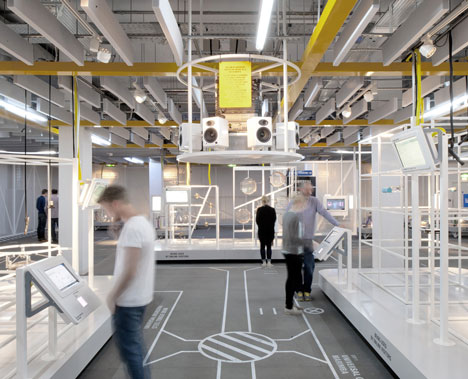
The Google Web Lab was created by Google Creative Lab, in partnership with MAP, Universal Design Studio, interactive design and engineering group Tellart, digital agency B-Reel and graphic designers Bibliothéque, and comprises a series of physical devices that can either be operated in person at the museum, or online at chromeweblab.com.
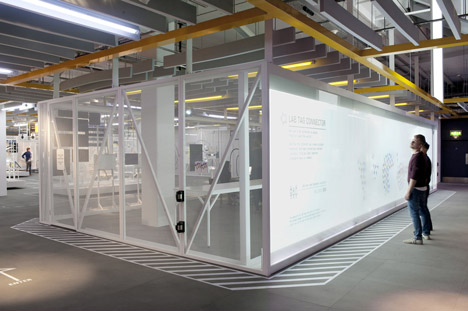
"Web Lab offers the opportunity for visitors to be more than just spectators," Universal Design Studio director Jason Holley told Dezeen. "Online and in-museum visitors are equally able to enjoy a dialogue with the museum; engaging, interacting and affecting the exhibition content."
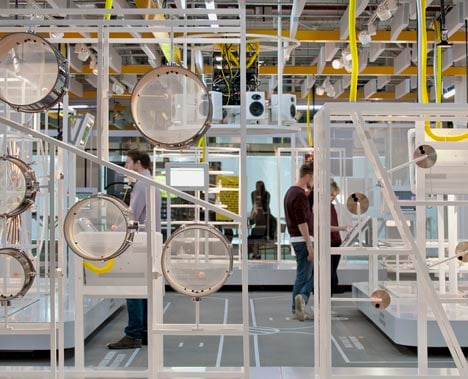
One device is an electronically-controlled orchestra (above), where different instruments are controlled by different users, while another is a data tracer that maps the sources of images and information and shows where they've travelled to (below).
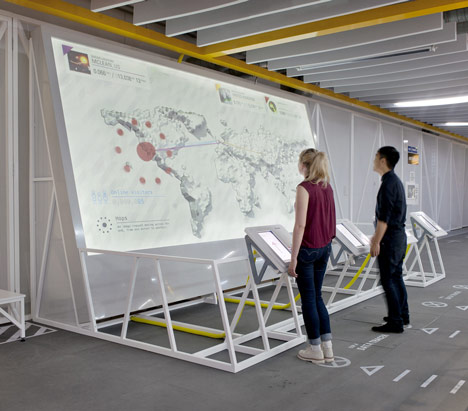
The Sketchbots (below) are robots that photograph the faces of users and draws them on a plate of sand.
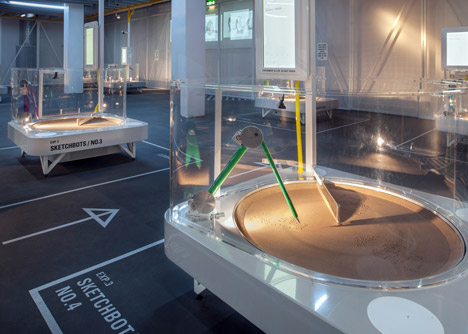
Above: photograph is by Andrew Brennan
Other devices include a virtual teleporter (below), which functions as a set of windows to locations around the world, and a computer that charts the locations of everyone who has taken part in the experiments.
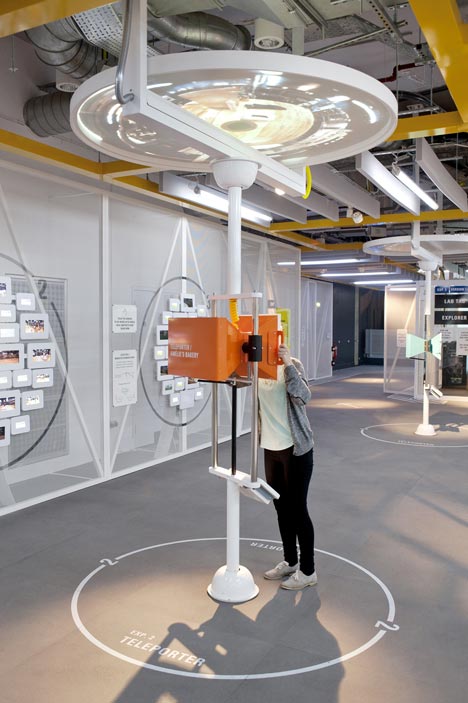
"Museums worldwide struggle with trying to understand how the digital can expand their reach to engage a wider and more diverse audience," said Holley. "Web Lab offers the possibility of making the online experience integral, not secondary. It offers new opportunities for richer experiences online and physical spaces that expand beyond the walls of the museum"
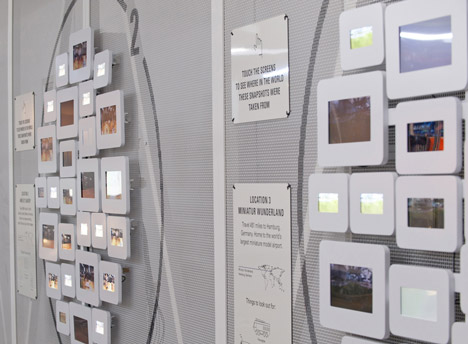
Above: photograph is by Bibliothéque
Cameras are positioned around the exhibition, so users can continue to operate the devices when the museum is closed.
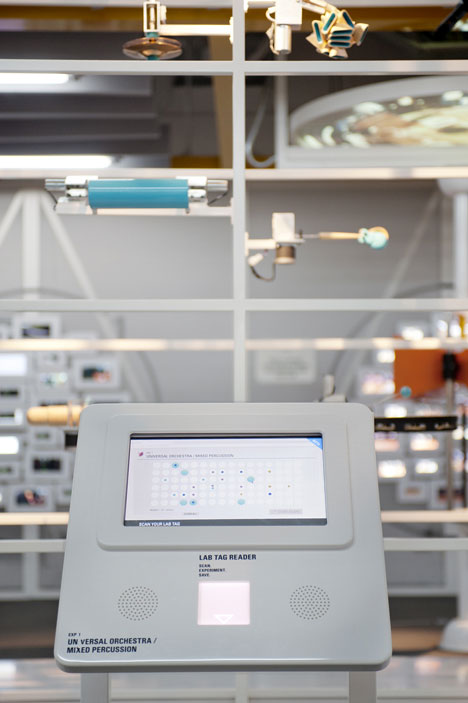
See all our stories about London Design Festival »
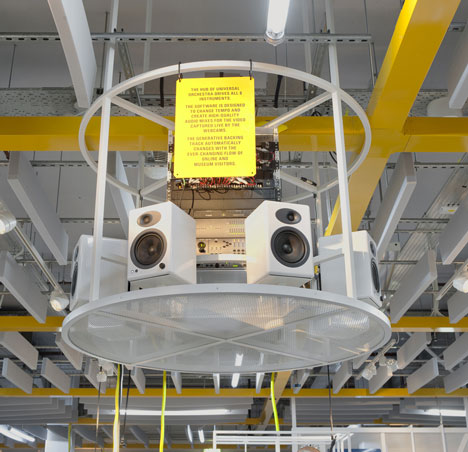
See all our stories about Universal Design Studio »
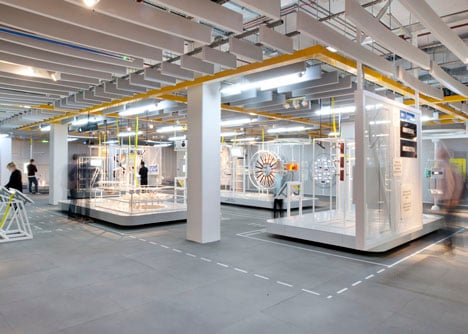
Photography is by Lee Mawdsley, apart from where otherwise stated.
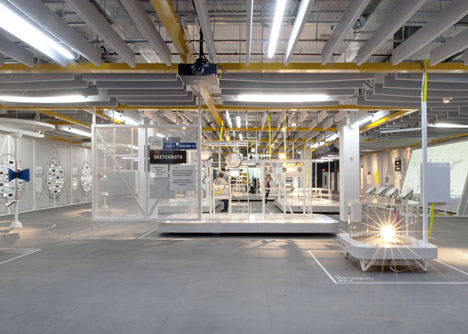
Here's a lengthier description from Universal Design Studio and MAP:
Universal Design Studio and MAP collaborate with Google on exhibition that merges physical and virtual
Universal Design Studio and sister company MAP are responsible for the 3D design and architecture of a dramatic new Google exhibition. Web Lab brings the extraordinary workings of the Internet to life through a series of interactive, web-connected physical experiments, aiming to inspire the world about the Web’s possibilities and to explain its complex technological processes. Exhibition visitors can make music with people across the world and trace the physical route taken by a simple web search. The exhibition at London’s Science Museum is open to the world online at chromeweblab.com, with online visitors experiencing the exhibition day and night through 24-hour web cams installed at the museum.
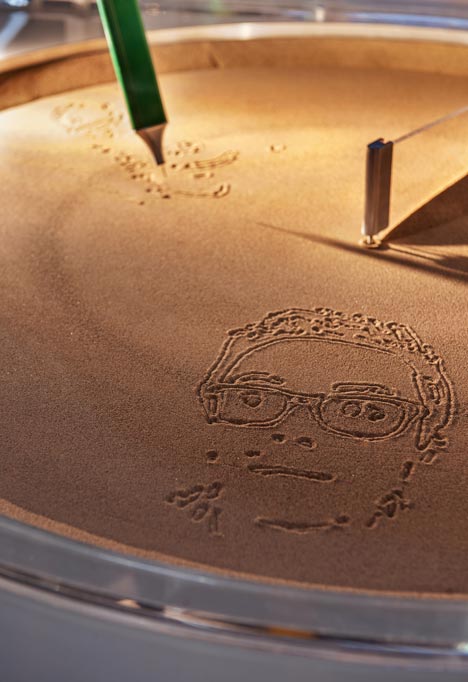
Above: photograph is by Andrew Meredith
Partnering with interactive design and engineering group Tellart, Universal Design Studio and MAP together designed the exhibition environment, creating innovative architectural and design archetypes for this new kind of physical/ digital collaboration. The design approach focuses equally on the experience of the space physically and the experience of it online via web cams. Architecture and design tools help to deconstruct technology and tell the story of how digital and physical realms are connected. New archetypes were created to separate users from their familiarity with objects, reinforcing the experimental nature of the exhibition, and to ensure each experiment could be appreciated both in the museum and online.
Universal Design Studio and MAP have created an immersive lab setting in the basement of the Science Museum, a scheme that foregrounds the idea of Web Lab as an interactive place of testing and continuous experimentation.
An industrial, functional aesthetic forms the backdrop to the series of playful experiments. At the exhibition’s entrance, a centrally positioned glass and wire mesh workshop provides a highly visible ‘curated lab’ space for events, simple repairs and displays. A key feature conceptually, it represents the ‘living lab’ nature of the exhibition, where visitors are not spectators but are engaged in and part of a working space.
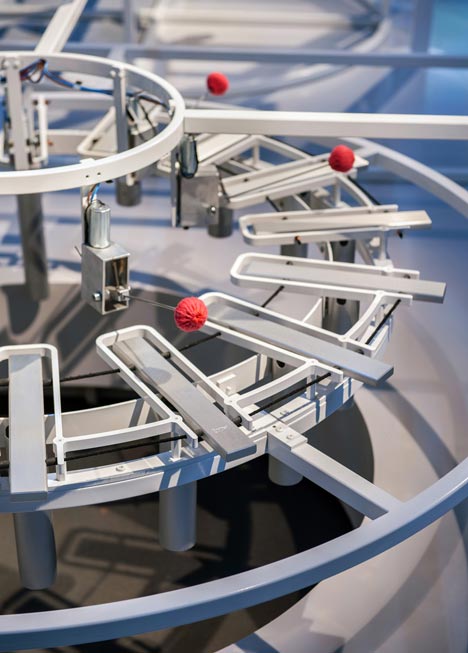
Above: photograph is by Andrew Meredith
Universal Design Studio and MAP were challenged to design a space that would be experienced both physically and online through ‘the eyes of the web’. In order for online visitors to easily interpret the space, architectural planes are clearly and directly articulated. The ground plane maps out the territory as a graphic surface. Bibliothèque created graphics for the rubber floor which, as well as providing an additional narrative layer to the exhibition, creates zoning and flow of movement, and adds a supportive description of each experiment’s function.
The ceiling plane consists of a bright yellow steel grid delivering the network of cables that service the experiments. Rather than be concealed, the grid articulates the physicality of the web, illustrating its data flow - the ‘life source’ of the experiments. Throughout the exhibition, cabling to experiments is intentionally exposed, emphasising this physicality.
A secondary skin of semi-transparent wire mesh lines the walls of the museum gallery, blurring the distinction between the existing building and the new installation. The space is acoustically controlled creating an optimal environment for the Universal Orchestra experiment, which provides the soundtrack to the exhibition experience.
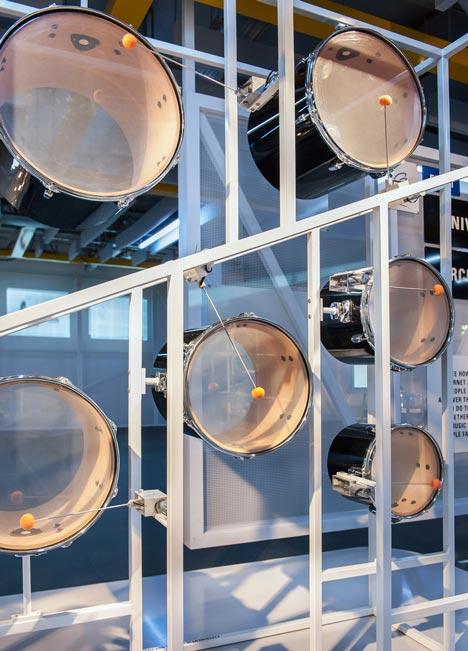
Above: photograph is by Andrew Meredith
Partnering with Google Creative Lab, interactive design and engineering group Tellart, digital agency B-Reel, and graphic designers Bibliothéque, Universal Design Studio and MAP together designed the exhibition environment, creating innovative architectural and design archetypes for this new kind of physical/ digital collaboration. The design approach focuses equally on the experience of the space physically and the experience of it online via web cams. Architecture and design tools help to deconstruct technology and tell the story of how digital and physical realms are connected. New archetypes were created to separate users from their familiarity with objects, reinforcing the experimental nature of the exhibition, and to ensure each experiment could be appreciated both in the museum and online.
Working with Tellart (who prototyped the experiments) and Universal Design Studio, MAP oversaw the industrial design, look and feel of the exhibition’s five Chrome Experiments:
Universal Orchestra: An Internet-powered eight-piece robotic orchestra creating harmonious music
Sketchbots: Custom-built robots able to take photographs and then sketch them in sand
Data Tracer: A map that traces where the world’s online information is physically stored
Teleporter: A series of web-enabled periscopes through which you can instantly access the world (including a 24 hour US bakery)
Lab Tag Explorer: A real-time visualisation of all Web Lab visitors from around the world that groups and categorises participants in incredible ways